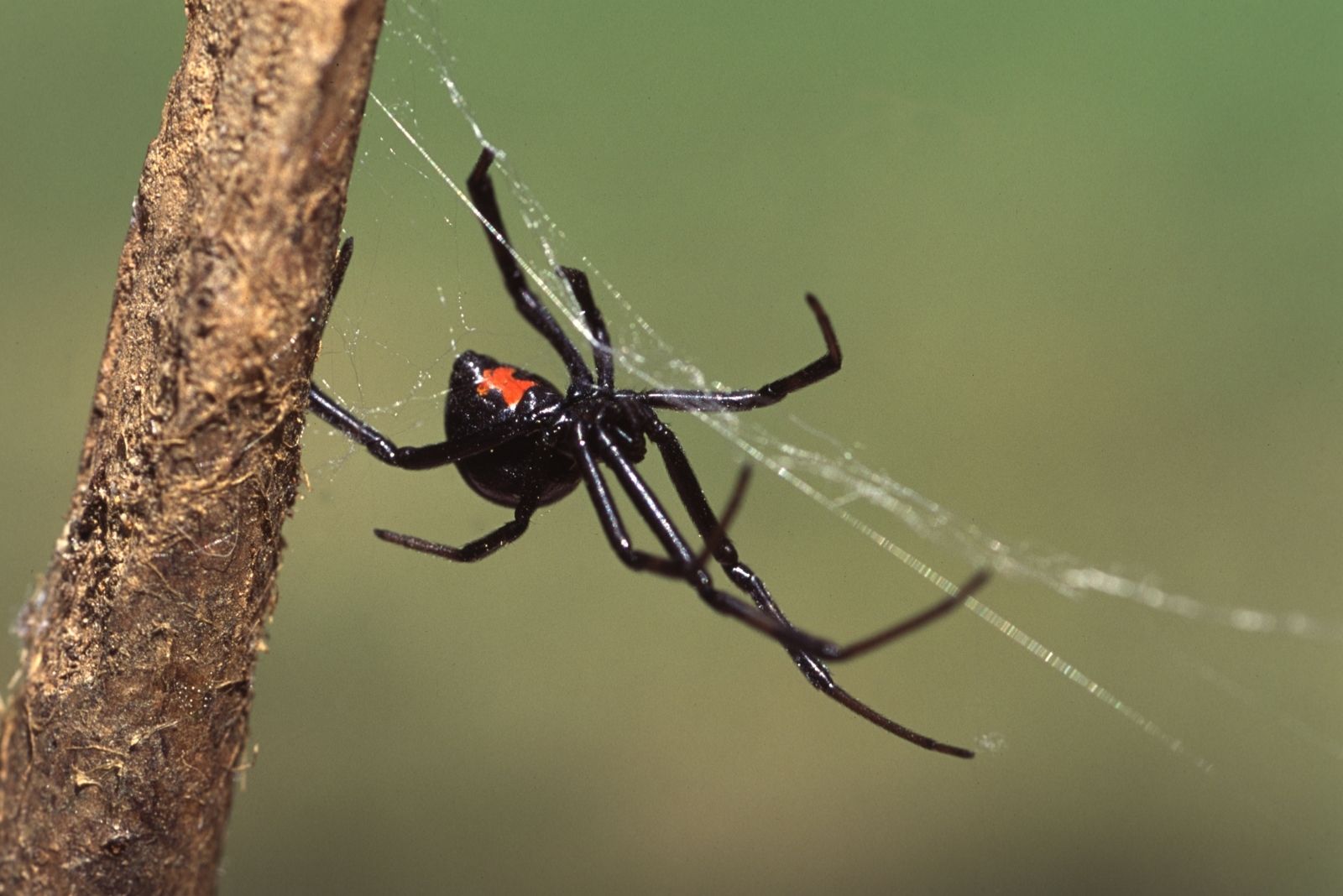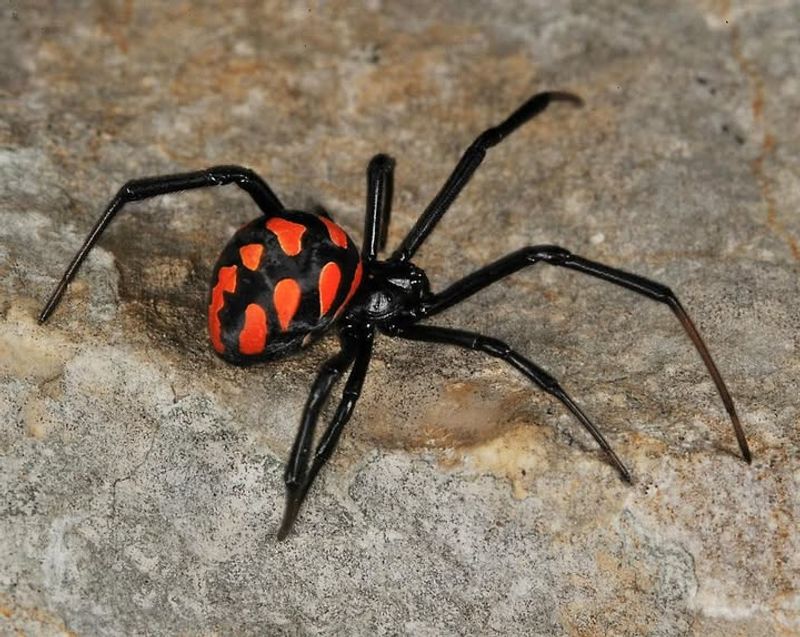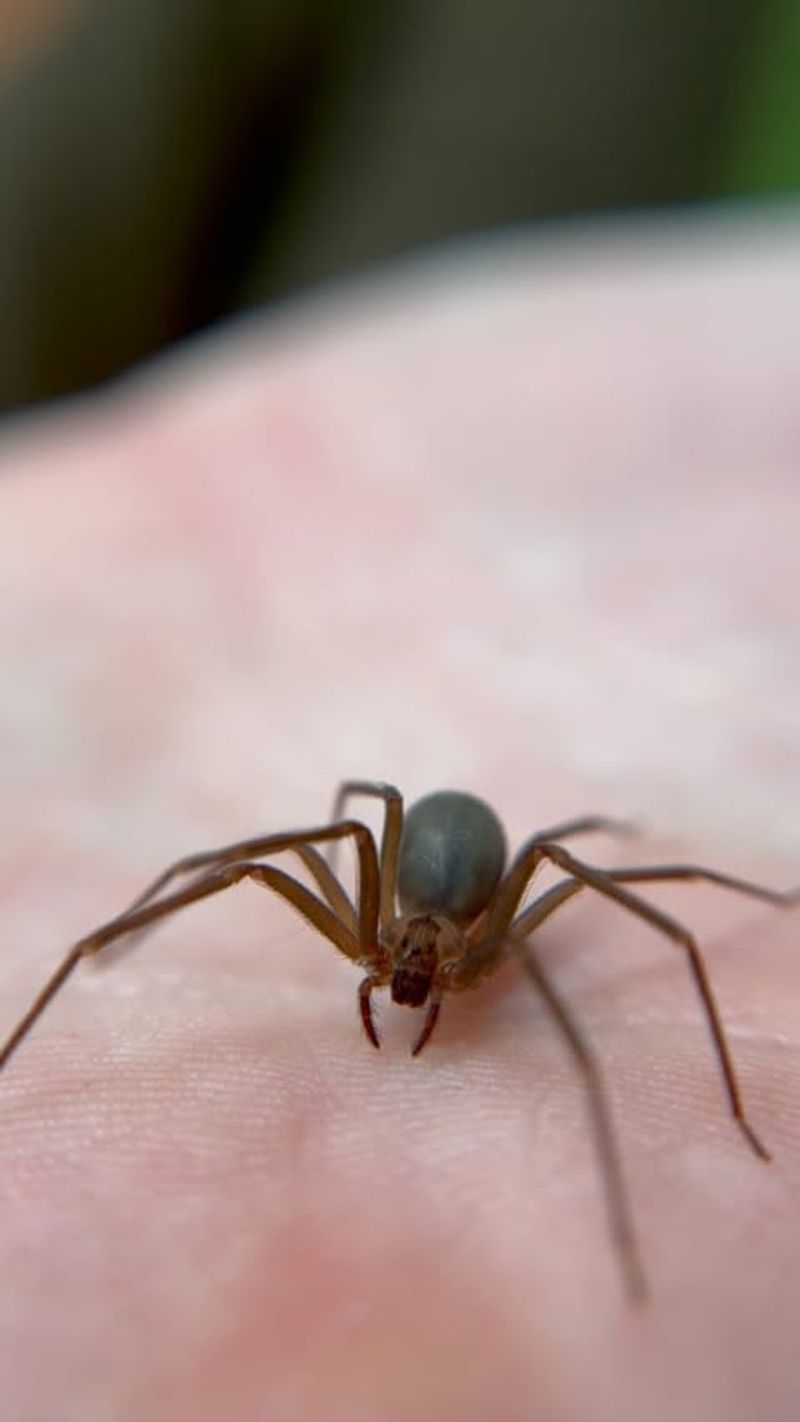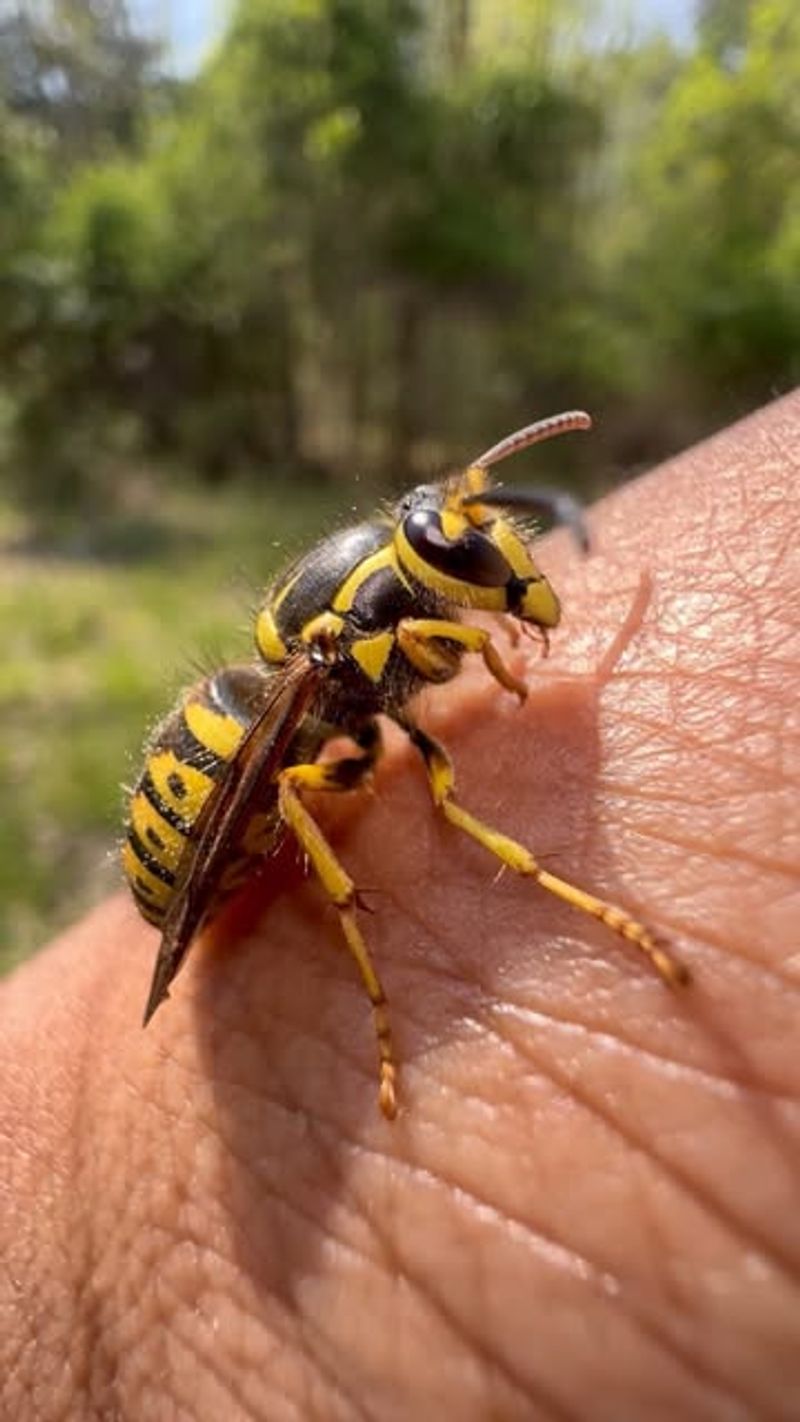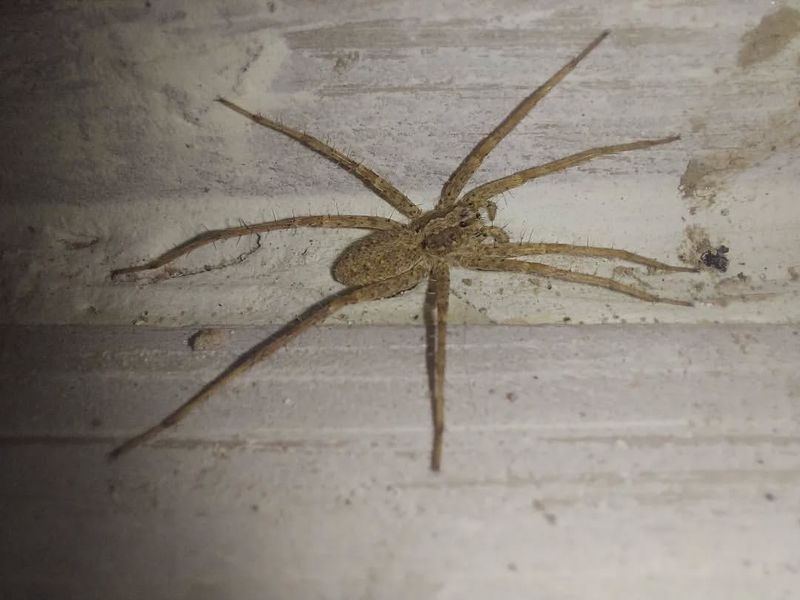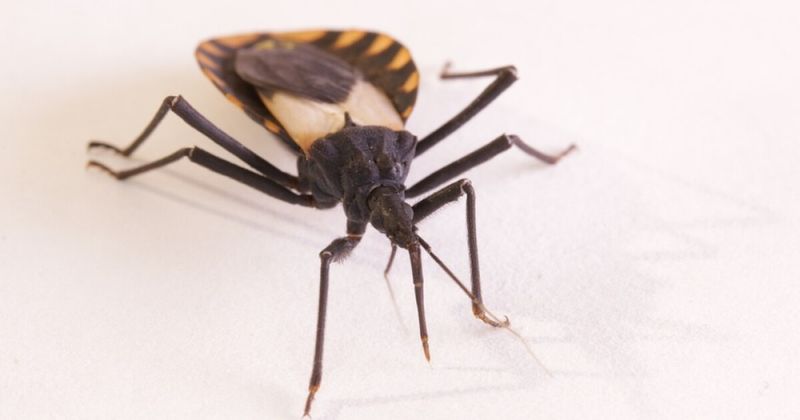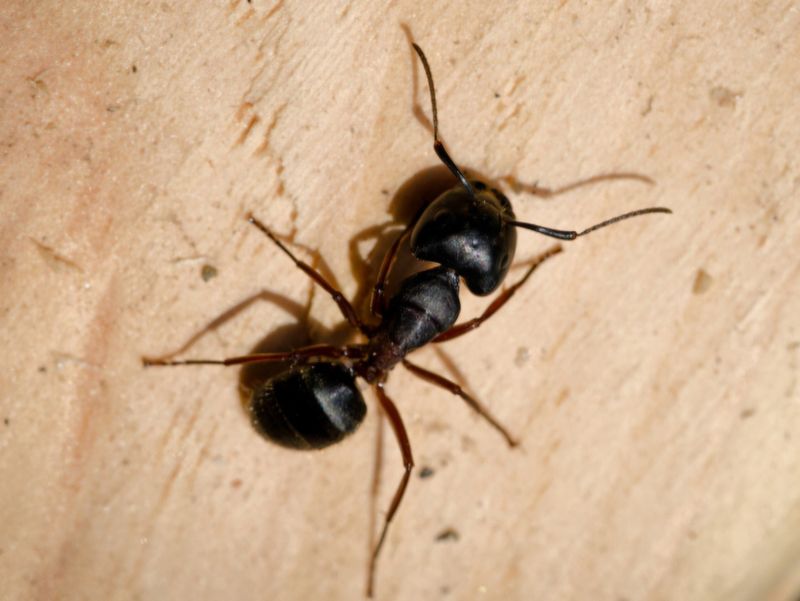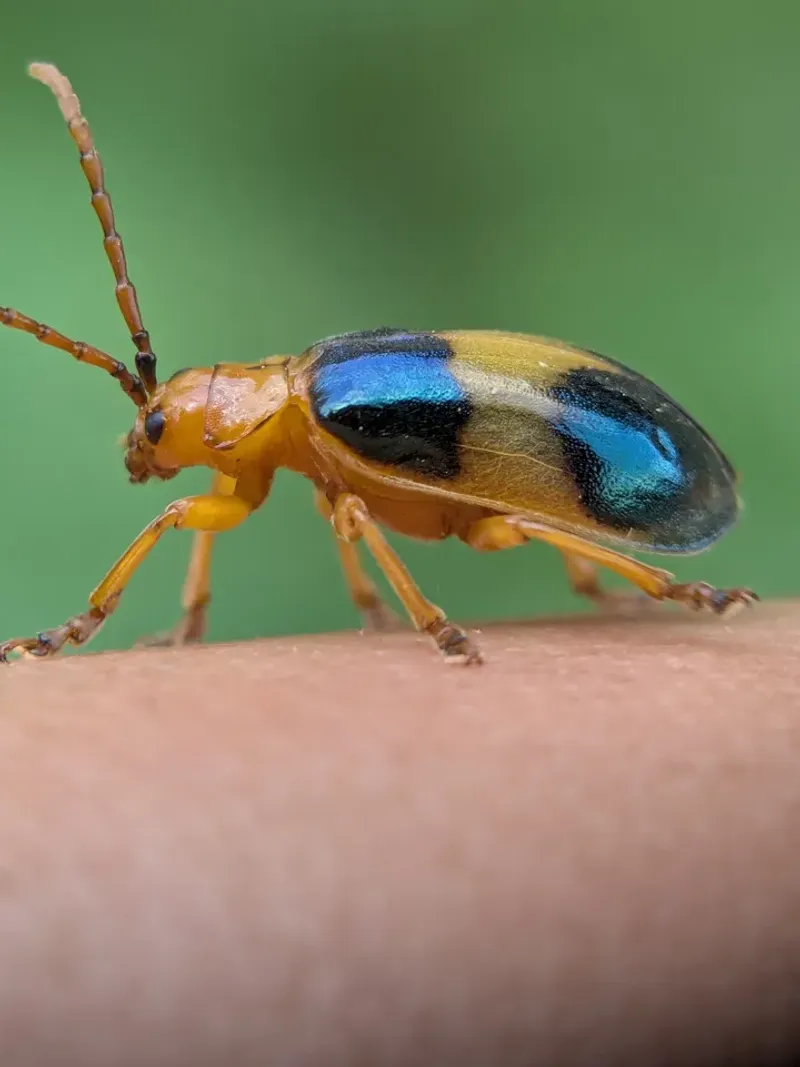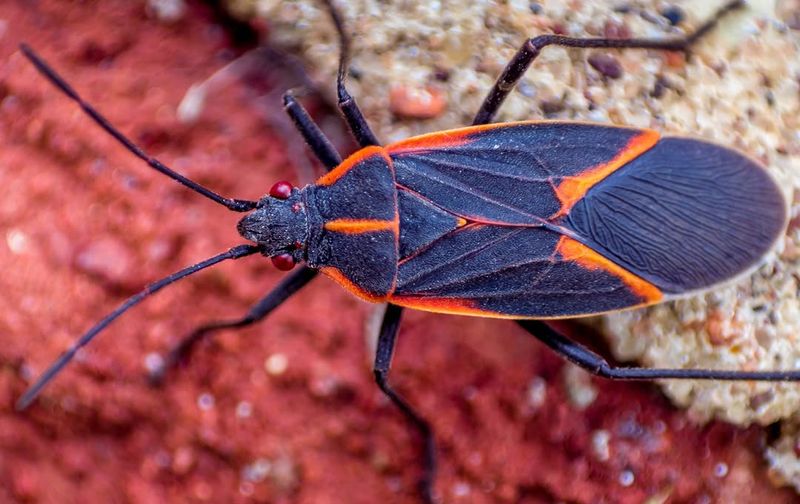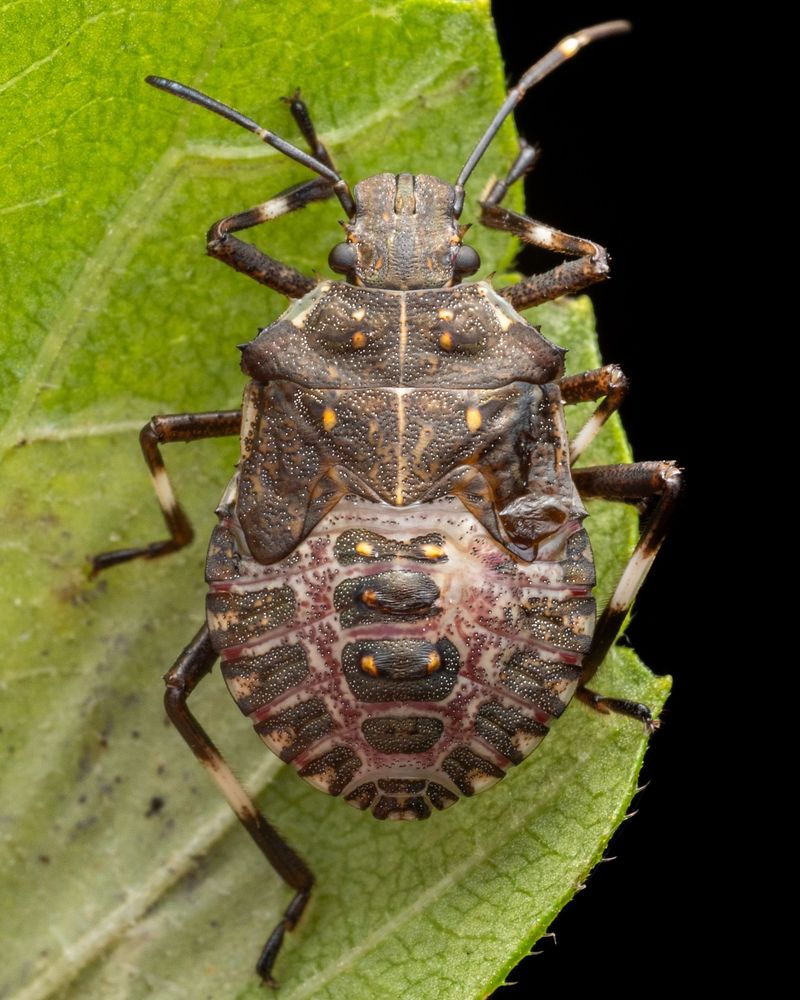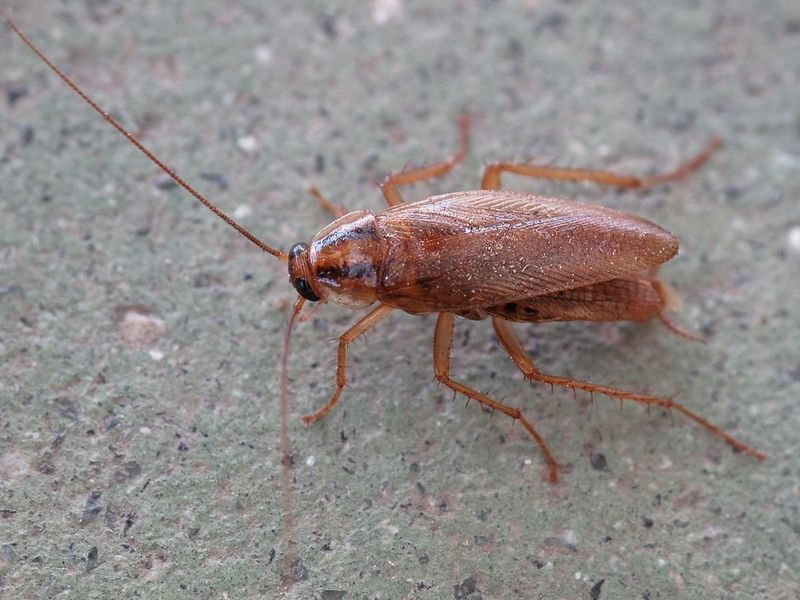Colorado homeowners know that winter preparation means more than just winterizing pipes and clearing gutters. Your garden and yard areas can harbor dangerous insects that, if left unchecked before the cold arrives, might damage plants, invade your home, or even pose health risks.
Taking action now, before the first heavy frost, protects both your outdoor spaces and your family’s comfort throughout the colder months.
1. Black Widow Spiders
Finding these venomous spiders around sheds, woodpiles, or garden corners is common in Colorado yards. Their bite delivers neurotoxins that cause severe pain and muscle cramps, requiring immediate medical attention.
For me, checking the base of garden plants every week has prevented many problems. Look under deck boards, in storage boxes, and along fence lines where they build irregular webs.
Remove clutter and seal cracks before winter drives them indoors seeking warmth. Wear gloves when moving stored items, and use a flashlight to spot their distinctive red hourglass marking before reaching into dark spaces.
2. Brown Recluse Spiders
Although less common than black widows here, brown recluses do appear in Colorado homes, especially in undisturbed areas. Their venom causes tissue necrosis, leading to painful, slow-healing wounds that sometimes require surgery.
Basements, garages, and storage sheds provide perfect hiding spots during fall. In my experience, Colorado’s cold snaps make early removal critical since they migrate indoors as temperatures drop.
Vacuum thoroughly in corners and behind stored items. Inspect boxes before bringing them inside from outdoor storage. Professional pest control becomes necessary if you spot multiple individuals, as their populations can grow quickly in protected spaces.
3. Yellow Jackets
These aggressive wasps build nests in wall voids, under eaves, and in ground burrows throughout Colorado yards. Unlike honeybees, they can sting repeatedly, and their venom causes severe allergic reactions in sensitive individuals.
Late summer and early fall bring peak colony sizes, making them especially defensive. I’ve learned that disturbing a nest accidentally while raking leaves can send dozens of angry workers after you instantly.
Locate and eliminate nests before winter, when queens seek shelter indoors to hibernate. Treat ground nests at dusk when workers return. Professional removal is safest for large or hard-to-reach colonies near entryways.
4. Hobo Spiders
Common throughout Colorado, hobo spiders build funnel-shaped webs at ground level near foundations, in window wells, and around garden borders. While their bite’s severity remains debated, it can cause localized pain, redness, and blistering in some people.
They’re fast runners and surprisingly aggressive when cornered, unlike most spiders that flee. Checking window wells monthly has helped me catch infestations early before they spread.
Clear vegetation away from your home’s foundation to reduce hiding spots. Seal foundation cracks and gaps around utility lines. Regular sweeping of porches and patios disrupts web-building and discourages settlement near entry points.
5. Kissing Bugs
Although more common in southern states, kissing bugs have been documented in Colorado’s warmer regions. They feed on blood, typically biting around the mouth and eyes while victims sleep, and can transmit Chagas disease through their feces.
Outdoor lights attract them at night, bringing them close to doors and windows. Reducing exterior lighting during late summer has helped me minimize unwanted visitors around entry points.
Seal cracks in walls and around windows before cold weather pushes them inside. Remove wood and rock piles near your home’s foundation. If you find one indoors, capture it carefully in a sealed container for identification rather than crushing it.
6. Carpenter Ants
Large black ants tunneling through wooden structures cause significant damage to decks, fences, and even home framing in Colorado properties. Unlike termites, they don’t eat wood but excavate it to create nesting galleries, weakening structural integrity over time.
Moisture-damaged wood becomes their primary target, especially around sprinkler systems or poorly drained garden beds. Noticing sawdust piles beneath deck boards signals active colonies that need immediate attention.
Eliminate moisture sources and replace damaged wood before winter. Trail them back to nests during evening hours when workers are most active. Treating colonies now prevents spring expansion when reproduction accelerates rapidly.
7. Elm Leaf Beetles
Adults overwinter in protected areas like attics, wall voids, and garden sheds, emerging in spring to attack elm trees throughout Colorado neighborhoods. Their feeding causes leaves to brown and drop prematurely, weakening trees and reducing property value significantly.
Finding hundreds clustered in garage corners during fall cleanup isn’t unusual. They emit unpleasant odors when disturbed and leave stains on surfaces where they gather.
Seal entry points around soffits, vents, and utility penetrations before they seek winter shelter. Vacuum clusters found indoors rather than crushing them. Treating elm trees in spring becomes easier when overwintering populations are controlled before cold weather arrives.
8. Box Elder Bugs
Thousands of these red-marked black bugs congregate on south-facing walls during fall, seeking warmth before winter. While not dangerous to humans, they invade homes through tiny cracks, creating nuisance infestations that stain curtains and release foul odors when crushed.
Box elder and maple trees in your yard attract them in large numbers. Watching them mass on sunny walls in October tells you action is needed immediately.
Spray exterior congregations with soapy water, then seal entry points around windows, doors, and siding. Remove volunteer box elder seedlings from garden beds. Reducing host trees near your home decreases future population sizes considerably each year.
9. Stink Bugs
Brown marmorated stink bugs damage tomatoes, peppers, and fruit trees throughout Colorado gardens before seeking indoor shelter for winter. They pierce plant tissue to feed, causing scarring and deformities that ruin harvests just before the growing season ends.
Their defensive odor is remarkably persistent and unpleasant when they’re disturbed or crushed. I’ve learned that vacuuming them up works better than swatting, though you’ll need to empty the bag outside immediately.
Install tight-fitting screens and door sweeps before temperatures drop. Check attic vents and chimney caps for gaps. Removing garden debris and fallen fruit eliminates late-season food sources that keep populations high near your home.
10. Cockroaches
German and American cockroaches spread bacteria, trigger allergies, and contaminate food in Colorado homes. They multiply rapidly in warm, moist areas like basements, kitchens, and bathrooms, making fall prevention essential before they establish protected winter colonies indoors.
Outdoor compost bins and pet food bowls attract them during warmer months. Once inside, they hide in appliance motors, drain pipes, and wall voids where treatments can’t reach them easily.
Remove outdoor food sources and fix plumbing leaks before cold weather drives them inside. Clean kitchen surfaces nightly and store food in sealed containers. Bait stations placed now prevent small problems from becoming major infestations requiring professional intervention later.

